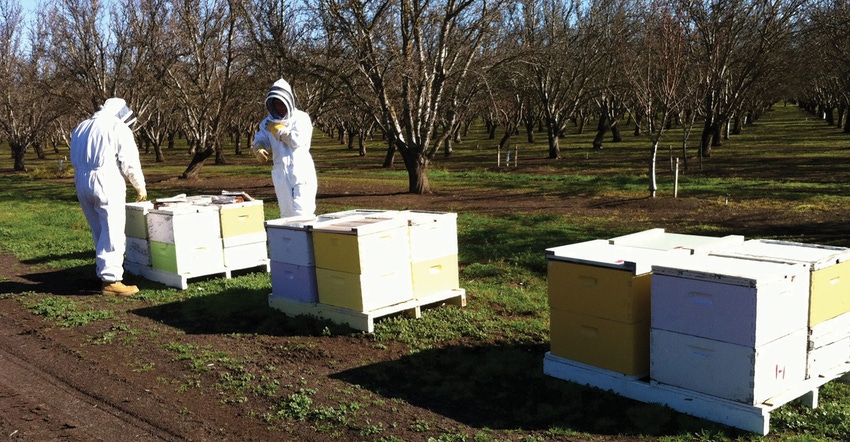
Hard to realize that while beekeepers have kept bees since 2400 BC in Egypt, collecting their honeycombs on the walls of temples, it was only the mid-1800s when bees began to be kept for honey in this country with only minimal thought to their pollination benefits.
Today, about “90 different crops, as much as 80% of flowering plants, require pollination by honeybees and other insects,” according to the Bee and Butterfly Fund. “That means one in three bites of food depend on a pollinator.”
During an ag tech conference earlier this season on Seeds of Our Future --- Honeybees, that point was brought home in a discussion on Innovations in Almond Pollination, presented by biologist Dr. Josette Lewis, the Chief Scientific Officer of the Almond Board of California.
“The cost of renting bees for almond pollination may represent a driver for innovation because the current practice is to use six to eight frames, about one hive, per acre and those costs have been steadily increasing by about $10 per hive, per year, since the early 2000s. Today’s costs of some $400 per acre represent upwards of 20% of the annual cost of production. For growers, there’s a big interest in getting costs down,” she said.
With annual bee colony losses throughout the industry hovering just over 40%, beekeeper costs continue to rise from maintenance beginning in June up until delivery in the almond orchards in the spring.
Add to those losses an increase in cost trying to keep the colony healthy by purchasing supplemental feed due to a decline in natural forage. There is also a challenge with queen bees dying off more frequently than in the past indicating genetics may be a problem along with bee diseases.
All of which leads to the conclusion that innovations are needed to benefit both nut growers and beekeepers as they work toward the largest pollination event in the world every February and March, a result of evolution and a nature-designed partnership.
Almonds have a genetic barrier that prevents them from self-pollinating, an evolutionary mechanism that, like humans, prohibits them from marrying their cousins.
“Very commonly, one of these tree varieties will be Nonpareil, the long-time Gold Standard, waiting for one of nature’s most important helpers to carry pollen from one tree row across to the other,” Lewis said.
“We’re limited at this point by the number of types of self-compatible varieties and their different qualities, but it’s a trend that breeders are focused on.”
Developing robotic systems
Another breeder area of interest involves development of robotic systems for pollination. “I can’t tell you the number of companies I’ve talked to around North America who think drones may be an opportunity for mechanical almond pollination,” she added.
Under development are items like hive sensors, kind of like a hall monitor to keep an eye on student activity. Breeders are also working on development of disease- and pest-resistant bees. “Think of them as tiny livestock that need to be kept healthy and free of things like Varroa mites. Supplemental feed is becoming a routine part of beekeeping because it’s more and more difficult to find places to put bees where they’ll be safe and have access to good, diverse pollen throughout the year.”
To the growers maintaining almond orchards, the annual four-to-six-week bee buzzing frenzy, is of paramount interest. During the other months, technology applications are being worked on for new business models and that may be part of the problem.
“The beekeeping industry is one that’s steeped in a lot of tradition maintained by independent beekeepers. It’s an amazing industry is the sense that it’s not been largely consolidated. There are no sort of corporate beekeeping institutions that I’m aware of, so it’s difficult to get the thinking going about different business models. It’s expensive to maintain bees throughout the year and some new applications would be helpful. The beekeepers I’ve talked to pretty much say pollination is sort of their side business as a seasonal revenue generator while their main business is honey production.”
Read more about:
HoneybeesAbout the Author(s)
You May Also Like




